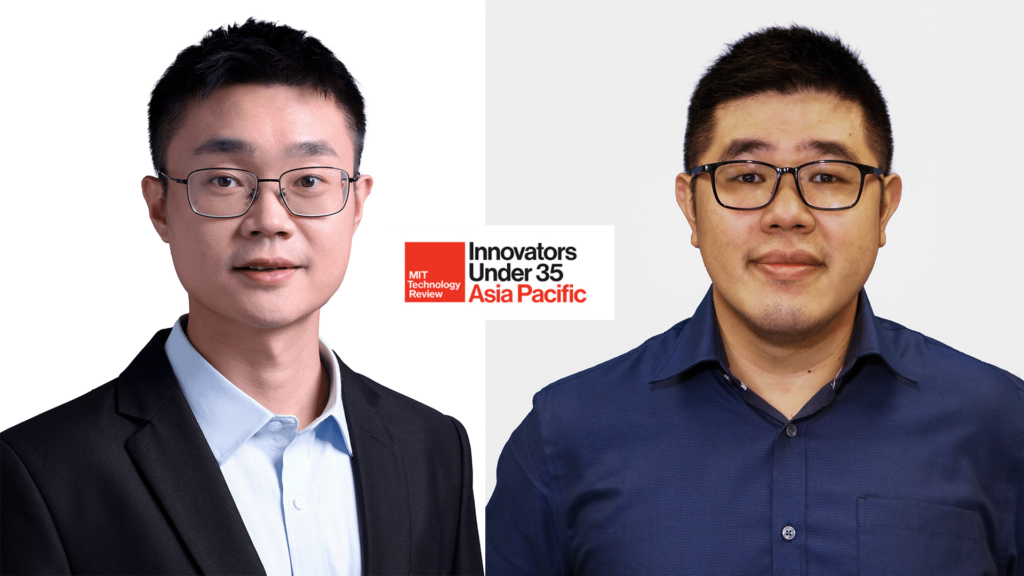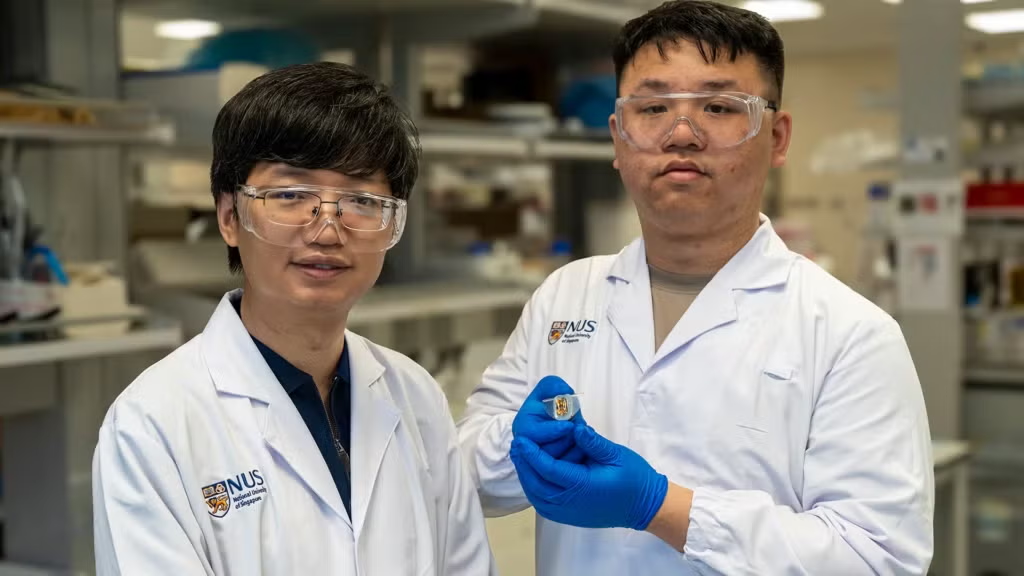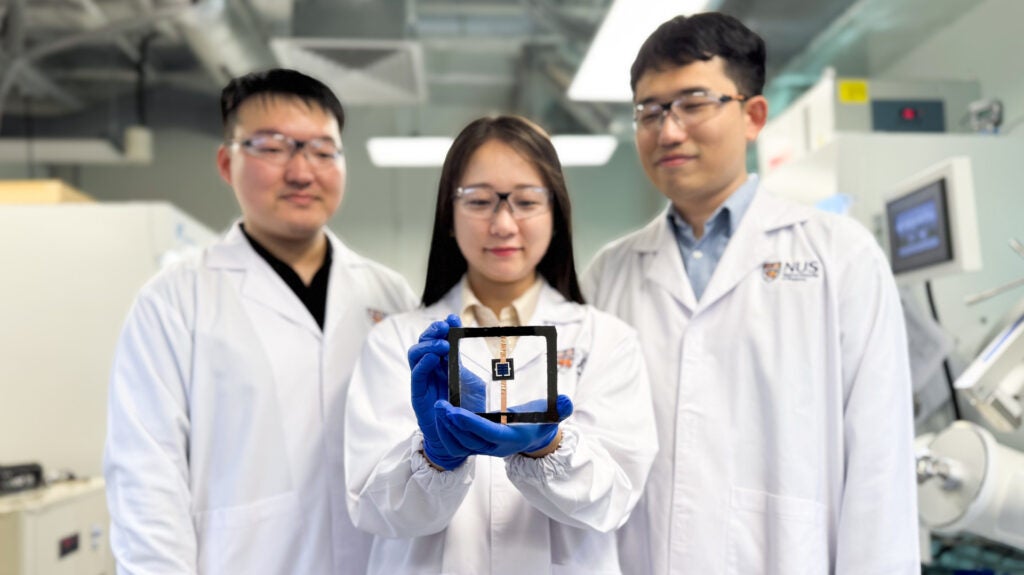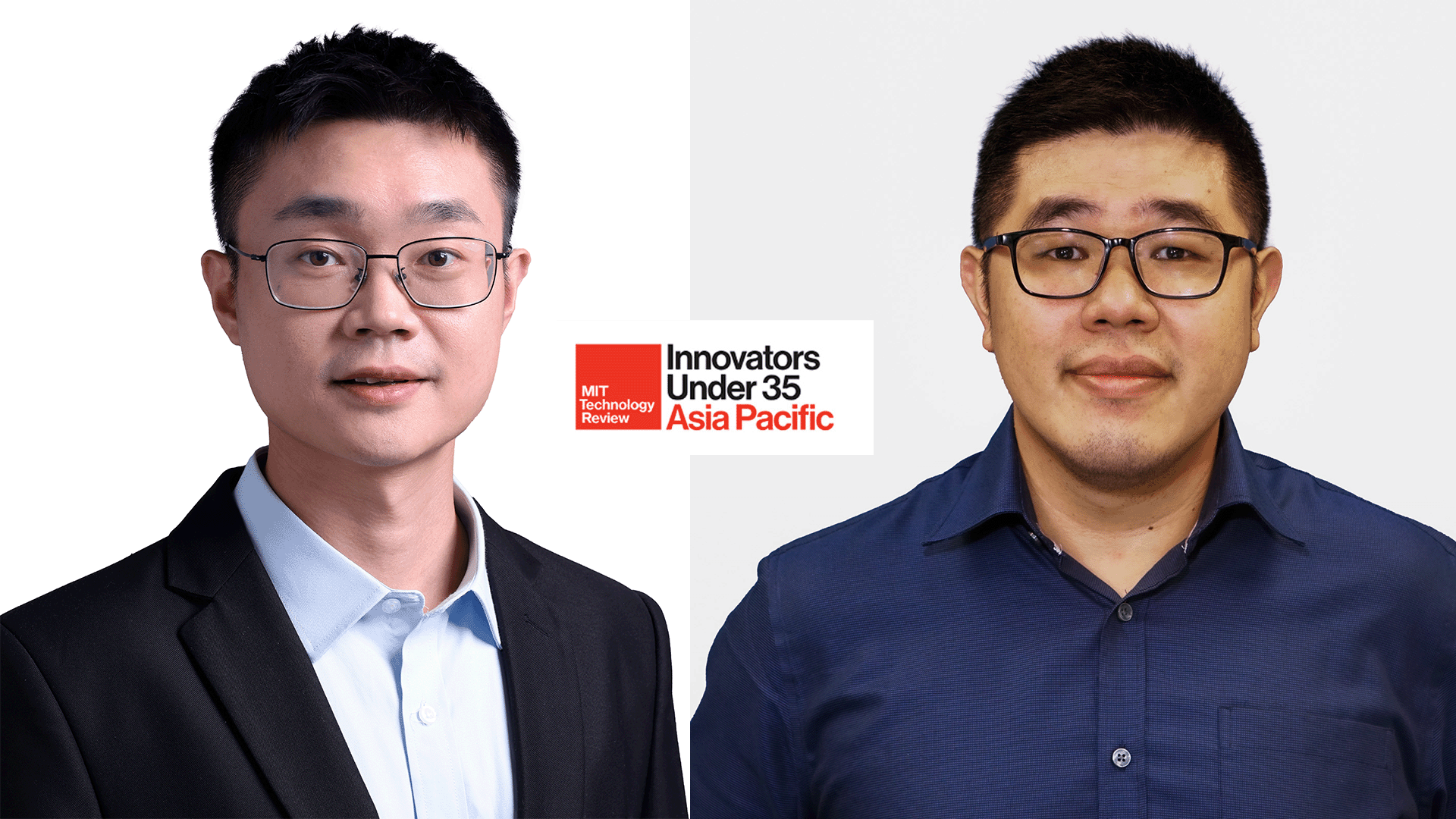
Two researchers from CDE have been recognised in the 2024 edition of the MIT Technology Review Innovators Under 35 (TR35) Asia Pacific list for their accomplishments and contributions to the progress of science and technology.
Assistant Professor Zhu Di and Adjunct Assistant Professor Ady Suwardi (both from Materials Science and Engineering) were among 35 people honoured at the TR35 awards ceremony, held on 9 September 2024 at the Pujiang Innovation Forum in Shanghai. This annual list highlights young trailblazers whose breakthroughs are expected to have a major impact in their respective fields.
The awards are grouped into five categories: Inventors who develop new technologies and startups; Pioneers who advance fundamental research; Entrepreneurs who launch tech ventures; Humanitarians who use technology to enhance opportunities or advocate policies; and Visionaries who discover new applications for existing technologies.
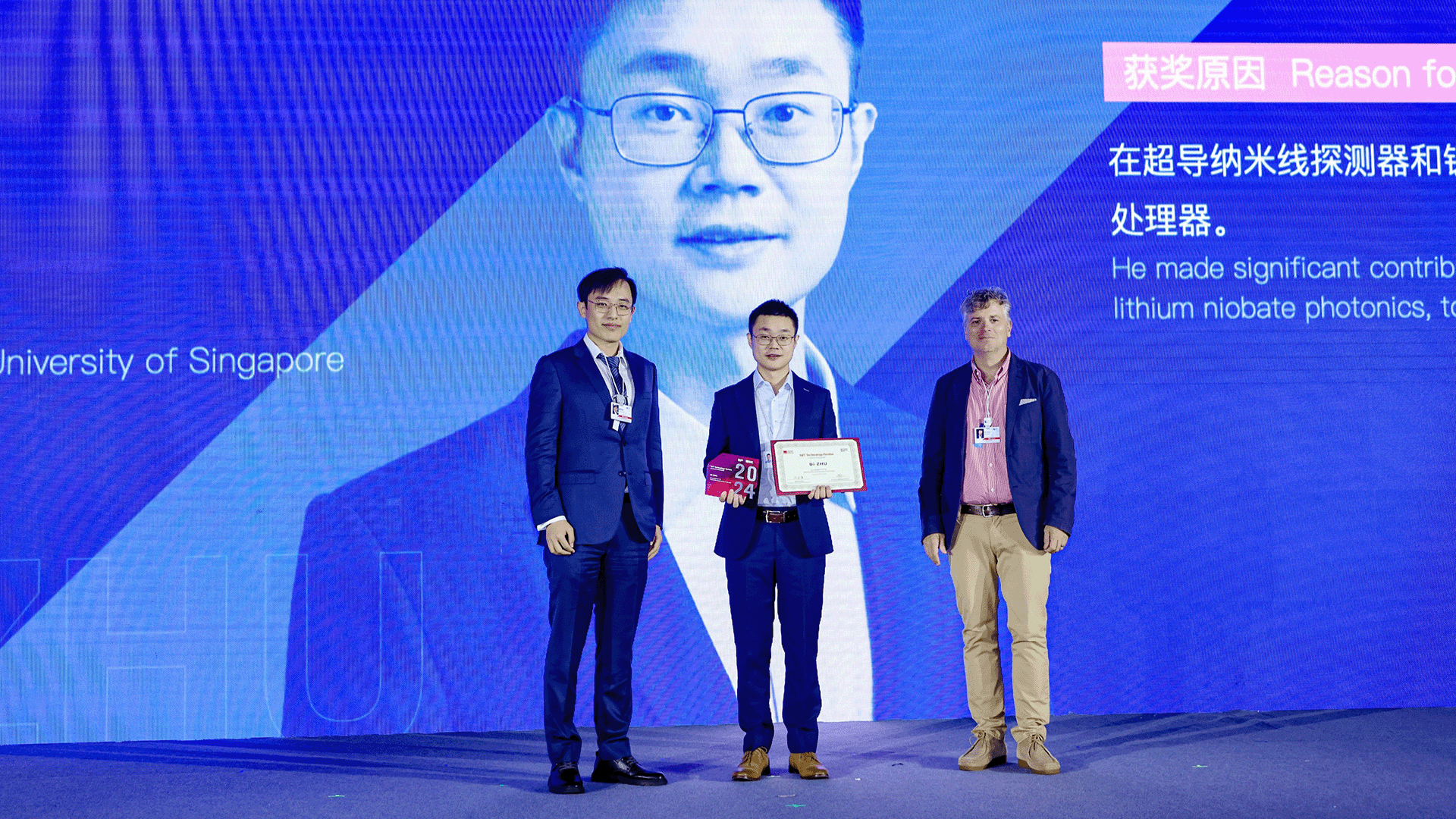
Assistant Professor Zhu Di: Innovating the future of scalable quantum computing
Quantum computing promises to solve complex problems in fields like cybersecurity and drug discovery, thanks to its ability to harness the laws of quantum physics. But building these systems to handle real-world challenges still faces formidable challenges.
Asst Prof Zhu Di, who holds appointments in both the Department of Materials Science and Engineering as well as the Centre for Quantum Technologies at NUS, is working on making this technology more practical. His focus is on creating scalable hardware for photonic quantum information processing. He was named an Inventor on the TR35 list for his important work on two key technologies—superconducting nanowire detectors and lithium niobate photonics. These advancements are crucial for building functional quantum processors.
Asst Prof Zhu’s research has improved how these technologies perform, making them more efficient for use in quantum processing. His team’s work has the potential to push quantum computing closer to everyday applications, from better encryption systems to faster problem-solving methods.
Going forward, Asst Prof Zhu plans to lead his team to continue developing new integrated photonic devices and collaborate with chip manufacturing platforms to explore new material systems and achieve wafer-level fabrication of quantum photonic integrated circuits.
Asst Prof Zhu said: “I’m honoured to be named on the MIT TR35 Asia Pacific list and would like to thank my mentors, collaborators, and team members who have made this possible. My team and I will continue developing innovative solutions to address critical challenges in quantum technologies.”
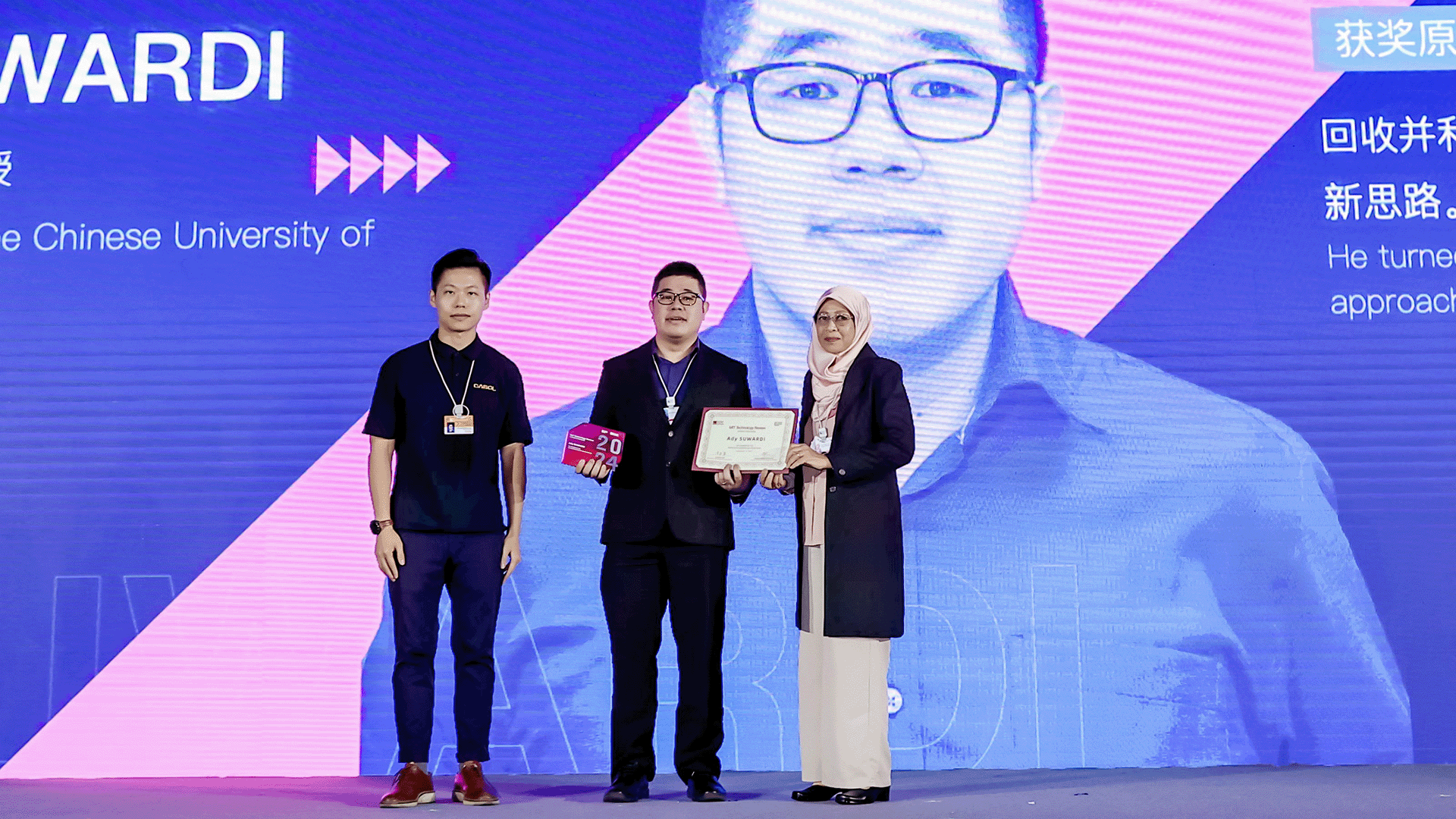
Adjunct Assistant Professor Ady Suwardi: Transforming waste into renewable energy
As countries worldwide focus on reducing their reliance on traditional energy sources like oil and coal, sustainable energy alternatives are becoming increasingly important. One technology that’s gaining momentum is thermoelectric energy, which converts heat into electricity. This clean, efficient technology has the potential to create renewable energy sources from waste heat.
Adj Asst Prof Ady Suwardi has been recognised as a Visionary on the TR35 list for his innovative work in this field. His research focuses on recycling discarded electronic products, like old solar panels, into valuable thermoelectric materials that can capture and use waste heat to generate electricity.
Adj Asst Prof Suwardi’s team developed a method to turn non-purified silicon from recycled solar cells into thermoelectric materials by adding elements like phosphorus and germanium. This breakthrough paves the way for more efficient and sustainable energy production using thermoelectric devices.
Adj Asst Prof Suwardi, who also holds a position at the Chinese University of Hong Kong, said: “Being commended on the TR35 Asia Pacific list has provided me a platform to spread awareness on the potential of thermoelectric technology and exchange ideas with peers across the region. I am very honoured and fortunate to be among the 35 young innovators recognised in this year’s list, and I look forward to contributing more impactful works in the years to come.”
* Article from College of Design and Engineering, NUS news


